R. Mark Liebenow's Blog: Nature, Grief, and Laughter, page 11
July 26, 2015
Dawn Rises Over Our City
 Dawn rises over our city. The oppressive heat and humidity of yesterday is gone. The rush of yesterday’s work day forgotten.
Dawn rises over our city. The oppressive heat and humidity of yesterday is gone. The rush of yesterday’s work day forgotten. Delivery people toss newspapers that plop on cool, concrete steps. Joggers and dog walkers nod at each other on the streets as they slowly wake up. Buildings catch the early sun and fill the dark alleys with light. People linger in bed with windows open wide to let in the fresh breeze and the sounds of birds chirping. Lovers hold hands as they walk along the shore, remembering the sweetness of last night.
Street vendors roll their carts into place and begin to warm hot dogs and chorizo, Italian sausage, satay, and burritos. They ready their ice cream bars and shaved ice cones.
Children race across the grass as their parents spread picnics on blankets. There are pick-up games of basketball and soccer. Frisbees glide on the air. Musicians gather on corners and under the trees to play the sweet and sad songs of their ancestors and the songs that rise from their hearts this morning. The rhythms of steel drums and bodhrans, the melodies of guitars and the haunting Andean flutes. Shuffleboard and chess, dashikis and yamulkes, laughter, dreadlocks.
The smell of corn roasting in the husk fills the warm afternoon air.
People dance as couples. People dance in wheelchairs. They dance in groups, they dance with their dogs, and some dance alone, raising their faces to the sun in gratitude. Kites soar up on the breeze. Big ships sway on waves in the harbor. Boats with orange and yellow sails go by. Rowboats and red kayaks go by. Faces are painted with imaginary blue creatures with whiskers, and toes are painted in a rainbow of colors.
The city dances and sings today, giving thanks for this glorious weather. Old folks and young people dance. People with cancer smile and dance because today they feel good. People with Alzheimer’s dance, so present to this moment of joy.
People of so many cultures are singing and dancing together on this beautiful, gorgeous, most amazingly perfect day outdoors.
Published on July 26, 2015 05:36
July 19, 2015
Trying to Hold Sunlight
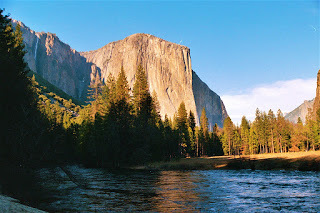 I hike in nature to be overwhelmed by scenes of natural beauty. I want to be stunned by what I see. I want to be swept up in something that leaves me in awe.
I hike in nature to be overwhelmed by scenes of natural beauty. I want to be stunned by what I see. I want to be swept up in something that leaves me in awe. The problem is that these moments seldom last very long, and as soon as I realize that I’m in one of them, as soon as I think about what I am experiencing, the moment ends. I become an observer instead of a participant.
I can try to stop thinking and hope that I slip back into the moment, but this rarely works because I can’t will myself to be surprised. Or I can hope that I’m still close to being in the zone, resume hiking with the chance that further down the trail another moment will sneak up and hijack my senses.
Sometimes I take a photograph of the special moment to preserve it, even though when I look at the photo a year later I wonder why.And to take a photograph, I have to step away from the flow of the moment to deal with the mechanics of the camera – deciding on focus, composition, shutter speed, and lens. I also jot down a few words to remind me to record the details down later before I forget them, something like “big moment by North Dome.” But trying to preserve transcendent moments in one-dimensional forms like photography or writing doesn’t work because the feeling cannot be caught and held like a butterfly this way. Photographs and words are only signposts.
One time I was hiking by Taft Point thinking about coyotes when I happened to look across the valley and saw a 500-foot-tall silhouette of a coyote’s head on the side of El Capitan. Formed by a cloud, it was soon gone when the cloud shifted.
Transcendent experiences are not the result of close observation or a matter of logic. I cannot make them happen. Like a Zen koan, the moment comes on its own and catches me by surprise.
All I can do is pay attention and be open to the unknown that exists around me.
Published on July 19, 2015 06:25
July 12, 2015
Taking Risks
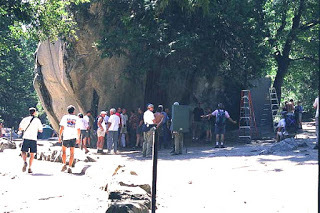 (photo of climbers gathered around Columbia boulder)
(photo of climbers gathered around Columbia boulder)Camp 4 is where the rock climbers hang out, and when I’m in Yosemite I stay with them. I like their camaraderie and the stories they share around the evening campfires of adventures from the day.
On days when they’re not climbing the big walls, they often gather at the 30-foot-tall Columbia boulder in camp and challenge each other to make it up the overhanging “Midnight Lightning” route. Almost all of them will lose their grip at some point and peel off the rock, with friends catching them below.
Climbers know their big wall climbs are dangerous. Sometimes they will miss a hold, or the rock will disintegrate in their hands, and they fall, with safety ropes catching them forty or fifty feet down. Generally the only injuries are bruises and cuts.
Taking risks brings excitement into the day and ushers me to the place where I am open to insights. I would guess that most changes in the world happen because of people taking risks, when they see a need and try to help without knowing what to do. Improvising on the spot, they discover hidden abilities and solutions.
I can get through life comfortably doing what I’ve always done. But I grow only when I take a risk and try something that I don’t know if I can do.
Published on July 12, 2015 04:37
July 5, 2015
Hunger for Life
Life is a hunger for Truth, Beauty, and Life. You know, the Big Ticket items.
We think about this a lot, well, not so much really, mostly after a really long day and we are wondering why we work so hard. Or when we’ve had a little too much to drink and our guard is down.
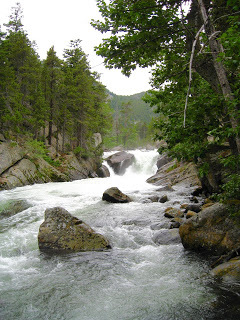 We really want to know because we’re scared that we took a wrong turn and this is as close to understanding LIFE as we're going to get. There are no big answers, of course, to go with the big questions, only little ones that we fold up and slip into our pockets and pull out now and then to give us a measure of comfort. But we still stare at the beer nuts on the bar trying to decipher their arrangement like tea leaves for divine wisdom.
We really want to know because we’re scared that we took a wrong turn and this is as close to understanding LIFE as we're going to get. There are no big answers, of course, to go with the big questions, only little ones that we fold up and slip into our pockets and pull out now and then to give us a measure of comfort. But we still stare at the beer nuts on the bar trying to decipher their arrangement like tea leaves for divine wisdom.
It may be an unspoken quest of everyone to find these places, these moments, to touch something eternal that will last forever, and then to linger in them for as long as we possibly can.
When I went with my grandfather into nature, we’d row his boat from the Mill Pond through the channel and out to a quiet place on Rock Lake in Wisconsin, put our fishing poles in the water, and sit. Often enough we didn’t catch many fish. We also did not talk much. I think he was teaching me how to listen to nature.
In autumn we’d walk at dawn across the fields and hills, listening to the dry corn shocks rasp against each other in the breeze, and solitary crows call to no one in particular. We’d smell the scent of fall apples in the air, and feel the cold bite of winter approaching.
I don’t think we need to use words to understand nature, because I don’t think words are capable of conveying this mystery. We just need to be outdoors to watch and listen. Or the mystery of waking up to our beloveds and feeling amazed at the wonder of their being and that they have chosen to be with us.
When we love someone and when we love nature, we move to a place beyond words. I don’t think we need to know why we feel so alive when these moments of intimacy come and we linger in them. We only need to listen the song of love that rises from our hearts, and the song that the rivers sing to the mountains.
We think about this a lot, well, not so much really, mostly after a really long day and we are wondering why we work so hard. Or when we’ve had a little too much to drink and our guard is down.
 We really want to know because we’re scared that we took a wrong turn and this is as close to understanding LIFE as we're going to get. There are no big answers, of course, to go with the big questions, only little ones that we fold up and slip into our pockets and pull out now and then to give us a measure of comfort. But we still stare at the beer nuts on the bar trying to decipher their arrangement like tea leaves for divine wisdom.
We really want to know because we’re scared that we took a wrong turn and this is as close to understanding LIFE as we're going to get. There are no big answers, of course, to go with the big questions, only little ones that we fold up and slip into our pockets and pull out now and then to give us a measure of comfort. But we still stare at the beer nuts on the bar trying to decipher their arrangement like tea leaves for divine wisdom.It may be an unspoken quest of everyone to find these places, these moments, to touch something eternal that will last forever, and then to linger in them for as long as we possibly can.
When I went with my grandfather into nature, we’d row his boat from the Mill Pond through the channel and out to a quiet place on Rock Lake in Wisconsin, put our fishing poles in the water, and sit. Often enough we didn’t catch many fish. We also did not talk much. I think he was teaching me how to listen to nature.
In autumn we’d walk at dawn across the fields and hills, listening to the dry corn shocks rasp against each other in the breeze, and solitary crows call to no one in particular. We’d smell the scent of fall apples in the air, and feel the cold bite of winter approaching.
I don’t think we need to use words to understand nature, because I don’t think words are capable of conveying this mystery. We just need to be outdoors to watch and listen. Or the mystery of waking up to our beloveds and feeling amazed at the wonder of their being and that they have chosen to be with us.
When we love someone and when we love nature, we move to a place beyond words. I don’t think we need to know why we feel so alive when these moments of intimacy come and we linger in them. We only need to listen the song of love that rises from our hearts, and the song that the rivers sing to the mountains.
Published on July 05, 2015 07:09
June 28, 2015
Land Prophets
 Destruction of the land only stops when people screw up their courage and speak up.
Destruction of the land only stops when people screw up their courage and speak up. They dedicate their lives to figuring out a better way and showing others how they can do things differently. They confront the people in politics and businesses who are exploiting the land only to make money, those who listen to special interest groups rather than the everyday people they represent, those who have betrayed the public trust.
In California, John Muir saw sheep destroying the wilderness meadows of the Sierra Nevada and worked to get them removed. In the process, he helped create the National Park system that has saved large tracts of wilderness areas. He also wanted to save Hetch Hetchy, but the politicians in San Francisco sold nature out for votes.Rachel Carsonin Maine discovered the devastating effects of pesticides on eagles and wildlife, and alerted people to the problem of using toxic chemicals on the environment.
Aldo Leopoldsaw the barren land in Sand County, Wisconsin, and figured out a way to restore the habitat. His efforts and writings kick-started the ecology movement.
Kathleen Dean Moore writes about the interplay of land and ocean in Oregon.
Sigurd Olsonworked to save the Boundary Waters in northern Minnesota.
Terry Tempest Williams in Utah writes of the radioactive desecration of land in the west and the resulting toll on human health.
Wendell Berryin Kentucky figured out how one can do sustainable farming, feeding people while doing minimal damage to the land, thus enabling the land to remain a habitat for animals and birds and still feed people for decades to come.
Sharman Apt Russell writes of the desert wilderness in southwest New Mexico.
John Burroughsin New York wanted people to love the nature that existed around us, even in the city, because then they would take care of it.
Francis of Assisi also loved nature and its creatures, and felt that we were brothers and sisters to each other. And rather than fear the outdoors, we should participate in its life and care for it.
Stepping into the unknown involves taking risks because we don’t know where we’ll end up, who will object, or what names we will be called. The experiences of the land prophets who have gone before us tell us that this is the way that the natural world will be saved.
Their visions guide and challenge us.
Published on June 28, 2015 05:09
June 21, 2015
Lingering in Wonder
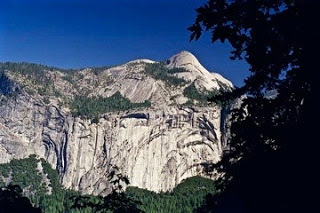 (photo of the Royal Arches and North Dome)
(photo of the Royal Arches and North Dome)When I go hiking, it’s not to get somewhere. It’s the journey that matters.
I know, you’ve heard variations of this before, possibly so often that you don’t care to hear it again. But it’s true, especially in wilderness areas like the Beartooth Mountains of Montana, the Tetons of Wyoming, and the forests in Washington. You can stop on any trail, look around and see a view, a creature, plant, or geological formation that leaves you amazed that such a thing exists.
While the scenic viewpoints take our breath away, it’s the journey of traveling there that prepares us to have those ah-hah! moments.
The view from the top of North Dome is spectacular and inspiring, and I love to stand on the spot where John Muir stood and see how two canyons come together and form the valley, but it’s when I linger along the trail to North Dome that I notice a small opening through the trees on the side. I go off trail, find a small meadow, and explore its landscape — the wildflowers, chipmunks, and the specific birds live there. Later, when I see an old path, I push through the brush and find a creek flowing over the edge of the canyon in a foot-wide waterfall.
The valley is the result of massive trauma as well as the slow weathering of wind and rain. It’s the same with people. When we linger with them, we discover what is moving beneath their surface, what traumas have redirected their lives, and how they have been shaped by compassion and the love of others.
When I’m reading a book and a paragraph blows me away, I want to set the book down and let those words settle into me. I want those words to rumbled around inside me for the rest of the day so that I will experience their depth. It might take a year to read an amazing book this way, but I will understand a great deal more. It probably took the author years to find these words.
I want to be open to this moment, to everything it is. Each day I want to leave space for the unexpected to happen. I want to be surprised by wonders that appear on their own.
I want to be attentive to the details of life, nature, and people, because in the details they become real.
Published on June 21, 2015 05:29
June 14, 2015
Mindfulness
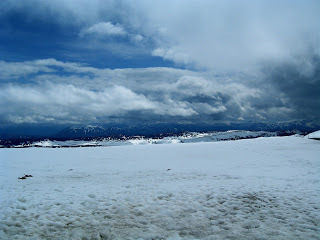 Kelsea wrote about watching the stark northern edge of the Alaskan wilderness for nature to call forth something hidden inside her.
Kelsea wrote about watching the stark northern edge of the Alaskan wilderness for nature to call forth something hidden inside her. Her listening throughout the day reminds me of a journey in my past when I paid attention to everything going on around me and I felt connected to the wonder of everyday life. Since then, distractions of secondary importance have taken over and control my days. Unfortunately most of them are worthwhile, so it’s hard to say “no” to them. But I end up skimming the surface of everything and do not connect to the depths of any.Thich Nhat Hanh says that when we are doing something like washing the dishes, we should not be thinking about anything else. We should be mindful only of washing the dishes. Hanh is speaking of being fully present to the moment, not just by listening and watching, but also by sharing ourselves with it.
When I am talking with someone, I should be focused on that person, on what he or she is saying, and not on what I’m going to make later for dinner. I should also let the other person’s words settle in me before deciding how to respond.
Because of Kelsea’s words, I feel the desire to renew my old journey by taking time each morning to open myself to the day’s possibilities. I want to leave the day’s schedule flexible and not pack every hour with tasks and meetings.
Each night I want to go over what has happened and see what I learned, where I connected to other people, and how compassion was shared. And I want to think about where compassion will be needed tomorrow.
I want to participate in life, not wave as it goes by.
Related post
Getting Close to Nature - http://markliebenow.blogspot.com/2014/10/getting-close-to-nature.html
Published on June 14, 2015 05:59
June 7, 2015
Losing Track of Wonder
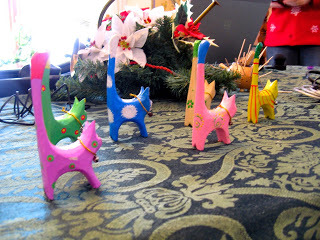 When did I learn not to see? After a week in the wilderness, I am no longer in awe of the majesty of the mountains rising up around me.
When did I learn not to see? After a week in the wilderness, I am no longer in awe of the majesty of the mountains rising up around me. Why did I forget how to taste? After the third day, I eat strawberries more for their nutrition than their fresh and exciting flavor. They tasted exotic on the first day.
A song moves me to tears on the first hearing. Then it becomes familiar and comforting. Then it’s nostalgic. Then quaint. What changed about the music?I’m excited to discover what is new, what exists outside my expectations and knowledge. Sometimes I experience the unexpected at the exact moment that I need it to show up. Sometimes what is new is something that I’ve been searching for for years, even though I did not know what it was.
How do I keep my wonder for the same beauty, the same grace, the same love if I experience it day after day?
If I wake up each morning expecting nothing, then everything is a surprise and I am filled with gratitude.
If I pay attention, I will realize the mountain is changing with the seasons. I will see that you are growing, and the wonder of your love is moving deeper into me every day.
Published on June 07, 2015 09:09
May 31, 2015
There's a Cadence to Silence
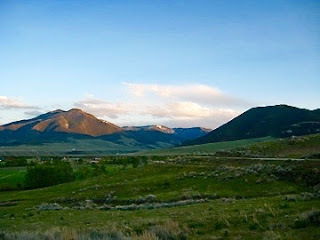 It's odd we don’t think it's odd that we regard silence as deficient and not as full.
It's odd we don’t think it's odd that we regard silence as deficient and not as full. We fill the air with banter, music, sports, news and weather updates until we fall exhausted into bed, the sounds of the day still ringing in our heads. Yet we feel unsatisfied because we’ve heard little that we want to remember. In the manner of the Quakers, we should remain silent until we have something important to say.
Words and music have powerful influences on us. If we listen to music throughout the day, it’s no wonder that we’re exhausted. Every song has a specific emotion, so every five minutes we are pulled into a different emotion. After a while, we no longer know what we’re feeling.
The sounds of the city shoulder each other out of the way as they fight each other to get our attention. They teach us not to listen.
The music playing in the background of a movie can heighten our experience of it. So much so that we think our walking down the street needs a soundtrack to make it real.
Sometimes when we’re chatting with friends, a word is said that opens the door to something deeper, but the conversation keeps going and the opening slips away. We continue talking about the surface things of life.
It can be unsettling to be home without the sounds of the TV, radio, or music filling the rooms. In the quiet we hear the sounds of the house — the refrigerator clicking on, the house creaking in the wind, a strange hum that comes from an unknown place, and we wonder if something is about to blow up.
When I go camping, it takes a couple of days before I can hear nature’s different, softer voices. It takes time for the surface chatter in my head to quiet. Sitting on the side of a mountain, I begin to hear the thoughts and feelings that are moving underneath my surface.
When I listen to silence, I hear the cadence of the world.
This morning I walked outside and heard the sounds of a creek trickling where I knew there was no water. Listening closer, I realized it was the breeze trickling over the surface of the leaves in the woods, and I felt goose bumps.
In the morning, the flowing waves of light coming from the rising sun wake me with their vibrations of energy.
At night I drink in the quiet of the darkness, and sip the sparkling stars like fine wine.
Published on May 31, 2015 06:13
May 24, 2015
Improving the View
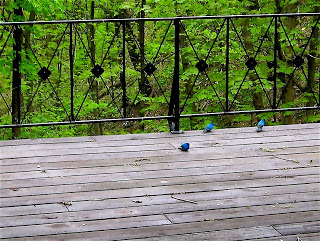 I set up a second writing desk at home, this one has a view of the green woods behind my house. Already I feel a surge of inspiration.
I set up a second writing desk at home, this one has a view of the green woods behind my house. Already I feel a surge of inspiration.The woods aren’t visible from the desk where I typically write because the window is too high. You might think this change was an obvious decision, and long overdue, since I often write about how the woods inspire me. It’s only taken me six years to make the adjustment.
When we moved in, we put everything somewhere just to get the moving van unpacked. And that’s where everything stayed, with us arranging our lives around these objects.
How many other matters in my life have been organized in the same way, following patterns I set up simply to get me through the day?
Now and then I need to stop what I’m doing and check to see if what I’m doing nurtures me and others in the long run.
Published on May 24, 2015 06:02



